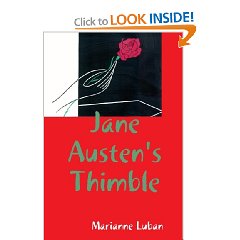Perhaps not all would agree, but to me the filiation of Thutmose III seems couched, when it is alluded to, in rather ambiguous--and sometimes very confusing--terms. To my knowledge, no one has ever proposed this--but I am now of the opinion that the vagueness may have been intentional and perhaps even the ancient Egyptians did not know for certain just who was the father of the young man who became the greatest pharaoh who ever sat on Egypt's throne. The fact that the Egyptians used the term “sA” for both “son” and “successor” and “it” for both “father” and “predecessor” may seem lamentable to us on account of the lack of precision, but is it possible that sometimes the ancients found all that an expedient?
For the sake of argument, let us assume there was a young woman who lived on the margin of the royal family, headed by king Thutmose I. She may have been a servant or a harem inmate and her name was Isis. There is no attestation of a queen by that name during the reigns of either Thutmose I or II, but Isis is awarded the queenly title during the rule of her son, Thutmose III--and this may only be a posthumous fiction. At any rate, this Isis may have received the attentions of both the pharaoh, Thutmose I, and his grown son. And why not--if Isis was of no significance? Thutmose I already had several sons by royal ladies and was not without heirs. Nobody imagined that any son of this inconsequential Isis would ever succeed. When the future Thutmose II followed his father as king, he was still a young man of whom it was was surely thought he had plenty of time to sire male children by Hatshepsut, a king's daughter who was his chief queen. But, as it transpired Thutmose II died at around the age of 30 without any offspring by Hatshepsut except a girl, Neferura. So the unimagined became the reality.
However, it was no secret that Isis had conceived, by a royal male, a son who was probably around 13 years old by this time. No matter who exactly his father had been, he was the only remaining male of the Thutmosid dynasty and could not be overlooked in the succession. Hatshepsut would just as soon have disregarded him, having her own ambitions, but, for a time, this was not possible. The crown was placed on the boy's head and he became Thutmose III. Some scholars have concluded that this Menkheperra Thutmose was a mere toddler when this occurred and that he needed a regent, Hatshepsut filling that role. But Thutmose's own account, an inscription at Karnak, belies this supposition. He says that he was an “iwn-mwt=f” priest in the temple when a pharaoh, presumably Thutmose II, came there to make offerings to the god and recognized him. Outside of a funerary context, an “iwn-mwt=f” is thought to be a priest who “conducted”[ sSm] processions of whatever kind, draped with the characteristic leopard or cheetah pelt. In this instance, it was ceremonies having to do with the god, Amun, and the young Thutmose had to be old enough to act the part of a procession leader.
But, as he tells it, this time Thutmose was not leading the procession of the image of the deity but was merely standing in the northern Hypostyle Hall at Karnak. Though he does not say so, it had to have happened [if there is any truth to the story at all] that one of the boy's priestly colleagues was leading this time and pointedly had the statue halt before Thutmose, thereby making it seem as though the god had found Thutmose in the shadows and was singling him out for recognition. At that point the pharaoh decided to let everybody know that the priest/prince was his heir this being “the plan of the gods” and allowed him to stand with him in the spot in the temple called “the station of the king”. Then Thutmose says “I flew to heaven as a divine hawk” [meaning he was incarnated as Horus, the usual name for the royal successor]...Ra himself established me. I was dignified with the diadems that were upon his head.” He is probably referring to his coronation, but it may even be that Thutmose II supposedly set his own circlet upon the boy's head right there in the temple of Karnak. But, reading between the lines, what Thutmose III is really saying is that he was just a priest and nobody expected him to succeed until Amun intervened. Had he been the true crown prince, a recognized only son and heir of Thutmose II, nothing like this narrative would have been necessary.
The whole incident may never have occurred, but the insignificance of Thutmose before he became king is the underlying theme, something unthinkable had all eyes been upon him as next in line to the throne. The other implication is that Thutmose II didn't even want to recognize the young man as his successor until Amun practically forced him to in front of everybody. In reality, the only explanation is that Thutmose II didn't care a thing about the future Thutmose III and that the youth became pharaoh only as a last resort in an effort to avoid having a female ruler. But, of course, that plan became upset in due course.
The first text that seems confusing comes from the tomb of Ineni. Ineni seems to have served Thutmose II and it is the latter he appears to be referring to when he says, “After he had joined among the gods, his son was set up in his place as the King of the Two Lands. While he ruled from the throne of him who begat him, his sister, the god's wife, Hatshepsut took care of the land...” This is rather odd because, were the text to be really clear, it should have said, “After he had joined among the gods, his sister, the god's wife, Hatshepsut, took care of the land while his son was set upon the throne of his father...” As it stands, it is not exactly clear if Hatshepsut was just the sister of the dead ruler [and we know she was] or also the sister of the new king! We could dismiss that entirely if it were not for the cube statue of Inebni, in the British Museum. Inebni was a servant of Hatshepsut after she had assumed the kingly titles. They are on the statue, [her cartouche having been erased] where she is styled “good goddess, mistress of the Two Lands” and then in secondary mention comes “with her brother, the good god, lord of doing things, Menkheperra”. The cartouche of Thutmose III remains unharmed. “sn=s” definitely means “her brother” and could also mean “her husband” in the parlance of the day. But, from indications, it seems to have been Neferura, the daughter of Hatshepsut, who was the first wife of Thutmose III--and not the woman-king, herself. Therefore, on balance, “sn=s” is best construed as “her brother”, written by someone who was certainly of the opinion that Hatshepsut and her younger male counterpart had the same father. If one chalks this up to a scribal mistake, it would certainly be a strange one as the inscription can certainly survive without the “sn=s” element and all that's needed is the word “Hna” meaning “with” or “also”. Of course, in official texts, where Hatshepsut and Thutmose III are shown together, there is no mention of “sn=s”--but then Inebni's statue was not an official one.
Monday, September 21, 2009
Subscribe to:
Comments (Atom)







